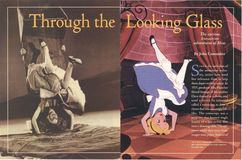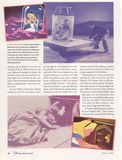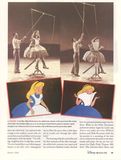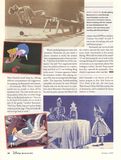



Since the early days of the animation industry, artists have used live reference to help them depict realistic action. In 1915, producer Max Fleischer filmed footage of his brother Dave dressed as a clown, and used a device he invented called a rotoscope to draw a clown that was amazingly life-like. The rotoscope was a projector that beamed single frames of a live-action film onto a drawing table. The animator could then trace those images onto paper. Instead of dreaming up the details of, say, how the clothing of Snow White moves as she runs frightened through the forest, the animator merely had to consult the tracings made by an assistant on the rotoscope. The best animators used Live-action film as a starring point, a means to a creative end.
In Snow White and the Seven Dwarft, animators used the rotoscope to draw convincingly the movements of not only the princess, but also the prince, queen, and witch. Walt Disney improved on the original technique by printing each film frame onto photographic paper, making it easy to flip frames of film from action sequences back and forth. These photostats were used both as a general reference and as a sort of blueprint for specific actions. Animators on Disney fearures have continued to use live-action references, including a martial arts routine for Mulan and a canoe sequence for Pocahontas.
The photos you see here are from the making of a Live-action film used for Disney's 1951 feature, Alice in Wonderland. They are curious, indeed. […]